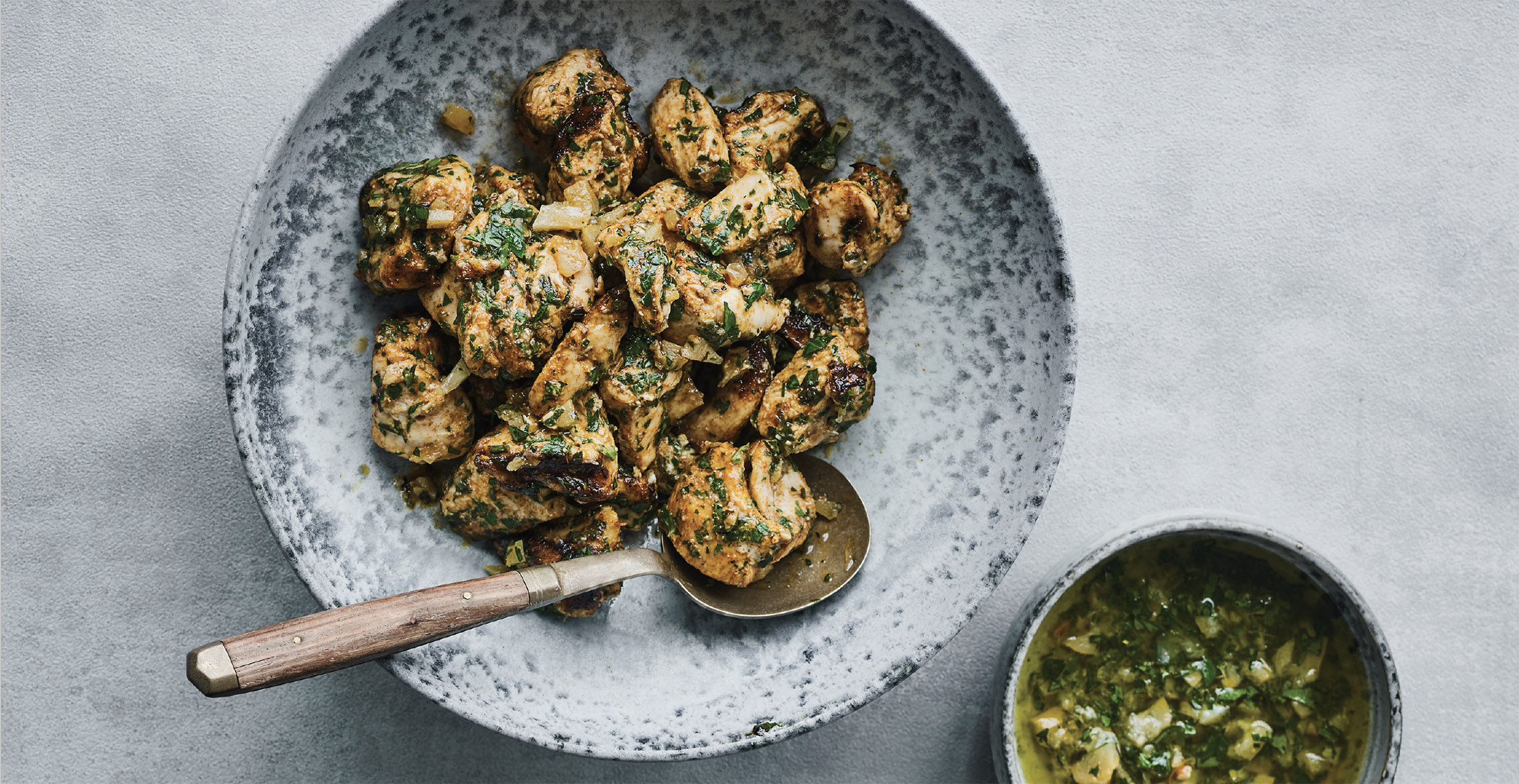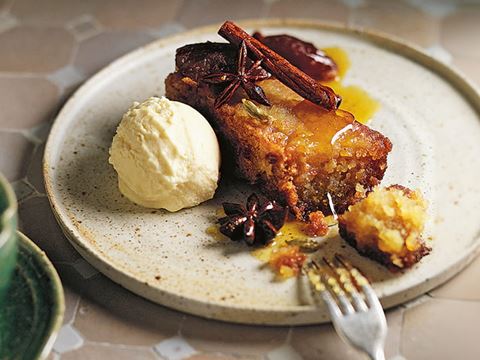
Flavors: Chicken with Charmoula
Before the development of the poultry industry in Morocco in the 1970s, it was customary to go to the market and pick out a live chicken. Though it is not as critical in a recipe like this, which marinates the meat in spices and herbs, I still encourage you to seek out the purest ingredients available to you.
Before the development of the poultry industry in Morocco in the 1970s, it was customary to go to the market and pick out a live chicken.
The chickens were large, and the meat really needed to be soaked and braised or it would be extremely tough. The breed of chicken, a beldi, is equivalent to some of the free-range artisan chickens sold in the US. And this is still what I prefer to use, pure poultry raised by hardworking farmers who take pride in their product. Though it is not as critical in a recipe like this, which marinates the meat in spices and herbs, I still encourage you to seek out the purest ingredients available to you.
Look for preserved lemons in specialty and Middle Eastern grocery stores.
Start by stirring all of the charmoula ingredients together in a large bowl.
Trim the chicken breasts of any excess fat and remove the tenders. Cut the breasts and tenders into 1½-inch (3-cm) pieces. Add the chicken pieces to the charmoula, turning to coat them, and refrigerate overnight, or for at least 6 hours.
Soak 6 long wooden skewers in cold water to cover for at least 20 minutes (or plan on using metal ones).
Next, make the vinaigrette: Whisk the olive oil, lime juice and parsley together. Stir in the preserved lemon and set aside.
Preheat a grill to medium-high heat, or heat a large cast-iron grill pan over medium-high heat on your stovetop.
Lift a quarter of the chicken pieces from the marinade, letting any excess stay in the bowl. Skewer the pieces, leaving about ¼ inch (6 mm) between them so the chicken will cook evenly. Repeat with the remaining chicken and skewers. Season lightly with salt and pepper.
Lay the skewers on the hot grill or grill pan and don’t move until well marked, 2 to 3 minutes. Rotate the skewers 90 degrees and grill to mark with a crosshatch pattern, about 1 minute more. Turn the skewers over and grill until the chicken is cooked through, about 2 minutes.
Carefully remove the chicken from the skewers to a bowl. Add just enough of the vinaigrette to lightly coat the meat and serve with any remaining vinaigrette on the side.
Leyla Moushabeck, ed. 2018, Interlink Books, 978-1-56656-038-2, $35 hb, www.interlinkbooks.com.

You may also be interested in...

Healthy Breakfast Recipe: Zaynah Din's Desi Twist on a Classic Sandwich
Food
Desi Breakfast Sandwich - This recipe for breakfast contains long-lasting carbohydrates, protein and healthful fats to keep you fueled as long as possible.
‘Desi Nachos’: Crunchy, Saucy Papri Chaat Recipe
Food
One of India’s most popular street foods, papri chaat are crispy chips of fried wheat dough, topped with zesty chickpea salad, drizzled with sweet tamarind sauce and finished with the crunchy Bombay mix and chaat masala seasoning.
Bake This Tasty Date, Orange and Olive Oil Cake by Shane Delia
Food
On one of famed chef Shane Delia's many trips to Morocco, some Bedouin men showed him how warming dates in olive oil before placing them in a tangine brings out the flavor of the caramel in the date, leading Delia to this recipe.